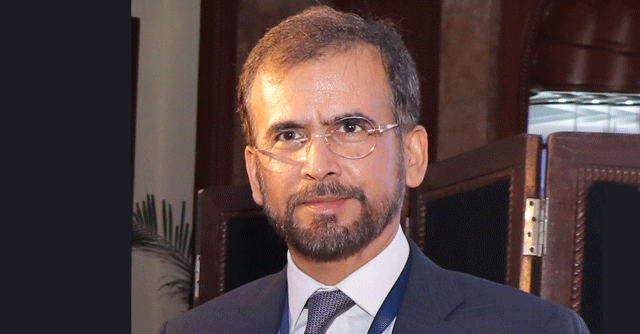
Satellite internet services will target businesses over consumers: Nelco chief

Note: The print copy of this story on Mint mistakenly mentioned that Nelco is not depending on LEO satellites and that it already had GEO satellites. That and the full form of GEOs (geostationary equatorial orbit) has been corrected here.
Tata Group company Nelco had partnered with Canadian satellite internet firm Telesat last year, entering the race to provide satellite internet services. In an interview, Pradip J. Nath, managing director and chief executive of Nelco, discussed how satellite internet can help improve internet infrastructure, who uses it and what its limitations are. Edited excerpts:
How do satellite internet providers presently operate, and how can LEOs change that?
So far, most commercial satellite internet services have been operational on geostationary equatorial orbit (GEO) satellites. The likes of the Indian Space Research Organisation (ISRO) and existing global operators already have multiple GEO satellites in orbit. Even among GEOs, technologies have evolved. Going forward, software-defined satellites will be launched. Steerable beams are also coming, which will help provide connectivity to moving vessels. Such technologies are already being deployed as we speak.
GEOs are today used to offer connectivity for ATMs, as well as in-flight wi-fi and maritime services since February 2020. All of this is operational already.
Low earth orbit (LEO) satellites are newer and have different characteristics – mainly in latency. These can offer services equivalent to fibre broadband, with 40ms latency. With GEO satellites, the latency can be around 500ms. (Latency is the time taken for data to travel from the source to the end-point). LEO satellites also bring larger capacity thanks to multiple satellites, and hence, are only likely to be used in markets that require fibre-standard connectivity, but laying physical lines there is difficult.
Which market segments are LEO operators likely to initially target?
We see the market operating as a combination of GEO and LEOs – for instance, an ATM will never be in need of high capacities or low latencies. LEOs will only make sense in cases such as connecting a remote village, 5G backhaul or remote data centres – thereby expanding the market scope for satellite internet providers.
We believe that the broadband LEO satellites will predominantly be a business to business (B2B) offering. LEO operators will find it hard to compete against existing telecom operators using broadband services through mobile or other networks. Mostly, areas that are not serviced by existing operators can be targeted by LEOs, but that isn’t enough in terms of returns, given the large capacity that these satellite networks would have.
How will conventional telcos and satellite operators line up alongside each other?
In consumer connectivity, the technology doesn’t matter – it is all about the marketing initiatives and the scale of infrastructure that an operator has. Talking about a conventional telecom operator, which is predominantly a consumer offering – of their entire revenue, close to 90% is coming from the consumers in a billion-dollar industry. For satellite operators to come and take over their existing market share, that too without any real reason, does not sound practical.
Satellite internet services form just about 5% of the total telecom industry in the world, and even lesser in India. To suddenly scale up and eat into their existing market share would be a purely ambitious plan for satellite operators. It is also important to note that in most consumer markets, the cost of laying fibre lines is far cheaper than the cost of deploying satellites and corresponding ground stations.
Is it viable in terms of the costs to offer satellite internet in remote villages?
It is a problem for sure. For instance, a person living in a remote village may not be willing to pay the same prices that individuals in metropolitan areas would for internet services. The government has a mandate to connect every area within the country, but within that, one needs to analyse the affordability behind the cost of connecting every single individual – even in the remotest areas
The government might step in to offer subsidies to connect remote areas in the future, in line with the Department of Telecommunications’ Universal Service Obligation Fund (Usof). Such acts could subsidise the costs of deployments, but today, it is too early to say that this is how the internet industry would progress.
It is because of this that consumer broadband on satellite internet in India is a question mark, for now.

